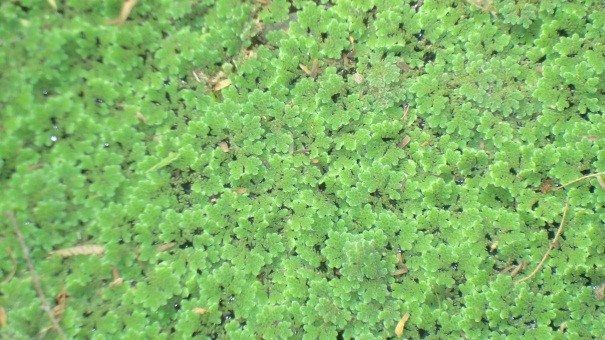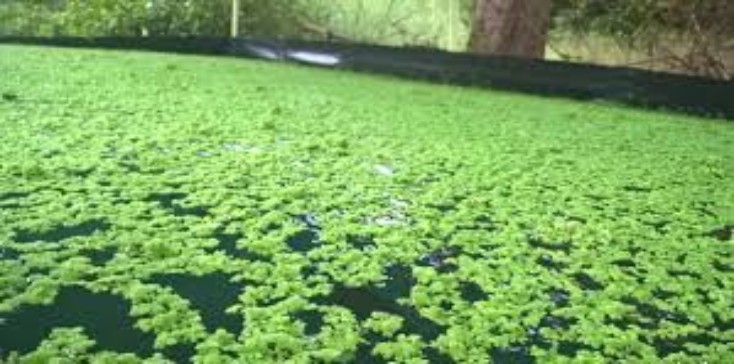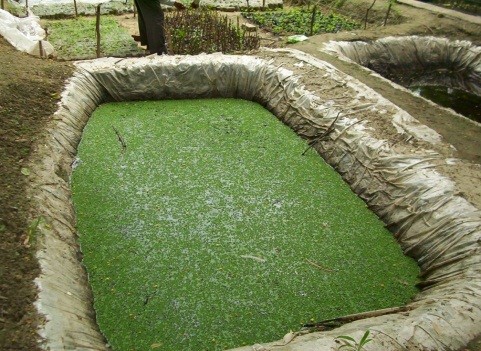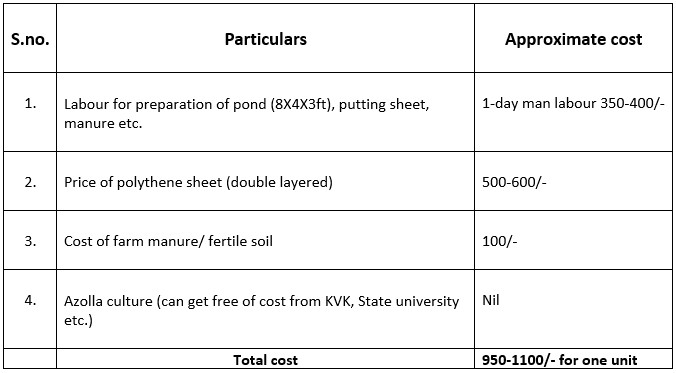
Azolla Farming for Animal Feeding
What is Azolla Farming?
Feed and fodder are the major important inputs covering about 50-75% of the total production costs of milk, meat and other livestock products. In Indian conditions, grazing cattle are generally not provided with any supplement to meet the need for protein and minerals. Grazing lands are under continuous degradation due to exploitative stress and are shrinking due to competing demand for food and forage under the increasing population pressure, urbanization and industrialization. The area under fodder production in India is difficult to increase due to the increasing demand for food and commercial crops. In light of this, it is very much important to search and adopt some feed resources which can help in providing some extra nutrients with less input. Azolla a free-floating aquatic fern seems to hold the solution for this situation. Azolla fixes atmospheric nitrogen in association with nitrogen-fixing blue-green alga Anabaena azollae, making it an excellent source of protein for livestock. It belongs to the family Azollaceae and orders Pteridophyta. The plant is highly productive with the ability to double its weight in seven days. It can produce 9 tons of protein per hectare of pond per year. This can be used as a part of feed or as a supplemental source of protein and minerals in the cattle ration. The detailed procedure for Azolla Farming Azolla Farming Bed, Azolla Cultivation and Azolla Production is explained in this blog.
Nutrient composition of Azolla
Azolla was found to contain 78-80 % organic matter, 17-22 % crude protein, 2-3 % crude fat and 12-15% crude fiber on a dry matter basis. The percent NDF and ADF of Azolla recorded was 45-47 and 30-33 respectively. Sodium, potassium, calcium (%) was 0.60, 0.73, 0.11 while Copper and zinc (ppm) were 16.12 and 71.47 respectively indicating Azolla as a good source of macro as well as microminerals. The in vitro dry matter digestibility was 78-80% while organic matter digestibility was 80-83%.

Azolla Cultivation Technology
Azolla can be produced by individual farmers on a small scale and a commercial basis easily. It can be cultivated in nursery plots, pond, canal, cemented tanks and polythene sheet lined pits depending upon requirement and availability. Any water bodies to be used for Azolla cultivation preferably should be in a shady place like under shade of a tree. A place of direct sunlight should be avoided. For low input production of Azolla, a pit covered with polythene sheet is advisable.

The production of Azolla can be achieved in the following steps.
- A pit of 8ftX4ftx3 ft is dug in the field. The size of the pit can be varied depending upon need. The pit is covered with a polythene sheet (preferably two-layered) to retain water properly. About 7-8 kg of fertile soil is uniformly spread over the sheet. Slurry made of 2-3 Kg cow dung and 30 gms of superphosphate (as phosphorus source) in 10 liters water is poured onto the pit. The pit is then filled with water.
- About 2-2.5 Kg of fresh and healthy Azolla culture is inoculated in the pit. The pit will be filled with Azolla within 2-3 weeks depending upon environmental conditions. Azolla can be harvested daily and fed fresh or maybe sundried for storage. Some Azolla should be left in the pit that serves as inoculum for the next crop. If half of the Azolla growth is harvested the rest half of the pit can be filled in 2 weeks.
- For proper maintenance of Azolla production, the water level should be checked in the pit regularly and 20-25% freshwater should be added in the pit at 2 weeks to prevent nitrogen build up in the bed. After six to eight months of continuous production soil and water should be replaced along with fresh Azolla culture inoculation. During pest and disease conditions fresh beds along with a fresh culture of Azolla should be prepared.
Cost of Azolla Production Unit

Environmental factors affecting Azolla production
- Temperature: Optimum temperature for Azolla growth is 25-300C, but most of the species can survive between15-350 In peak summer or peak winter growth of Azolla gets reduced.
- the pH of water: Azolla can grow in the pH range of 4.5-8.0 however optimum pH is 5.0-7.0. It can also grow in alkaline pH.
- Light: Azolla prefers to grow in partial shade. Bright sunlight with high temperature adversely affects the growth of Azolla. So care should be taken for the maintenance of shade condition in the place of Azolla cultivation.
- Phosphorus: Phosphorus plays an important role in the growth and multiplication of Azolla. Some phosphorus sources like Single superphosphate should be added at a regular interval in the pond water for rapid growth. The concentration of 25ppm of phosphorus in the soil can support the growth of Azolla well.
Limitations of Azolla production
- Harsh weather conditions like extreme summer and winter seriously affect the growth and production of Azolla similar to other crops.
- Azolla is sensitive to dryness, so the optimum water level in the pond should be maintained for the free-floating of Azolla.
- After 6-8 months of Azolla production from a pond replacement of soil bed, water along with fresh Azolla culture is required for optimum production of Azolla.
Farmers having 2-3 native cattle can have a pond for sufficient production of Azolla. They can feed Azolla as protein and mineral supplement animals with minimum cost.
